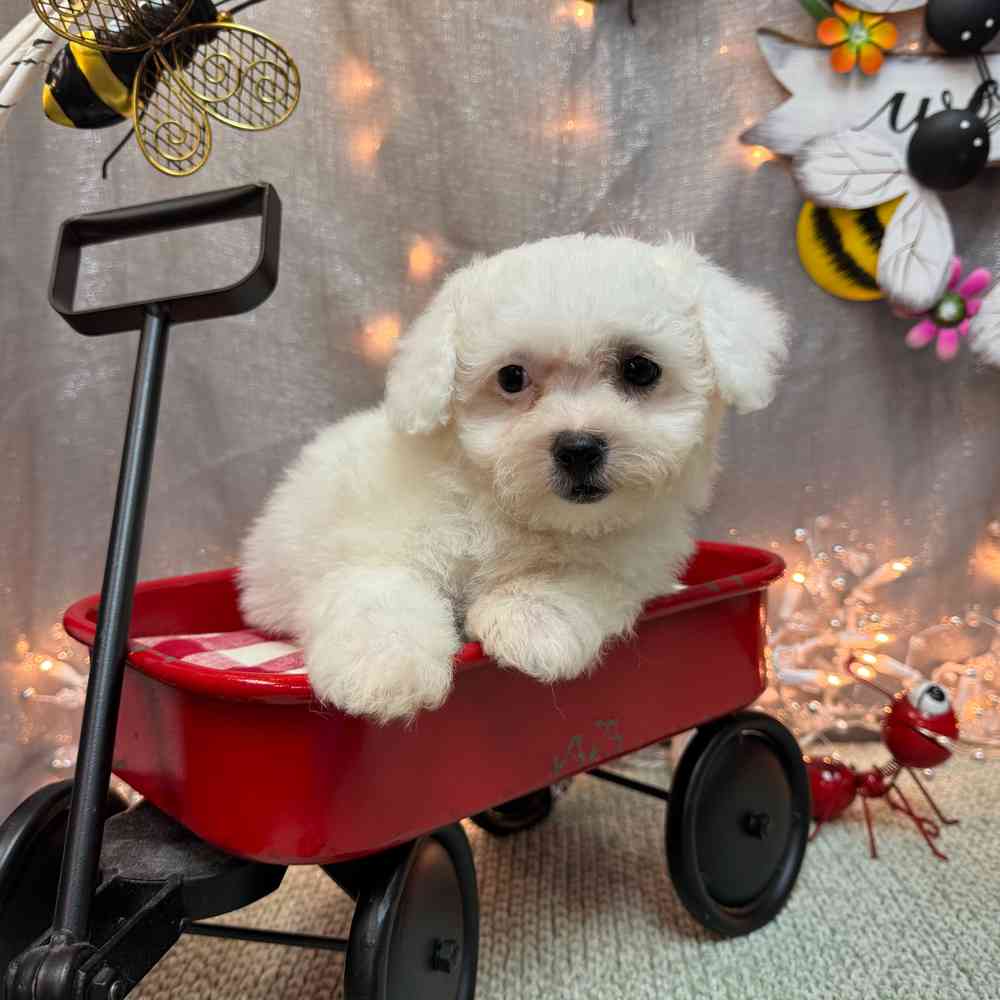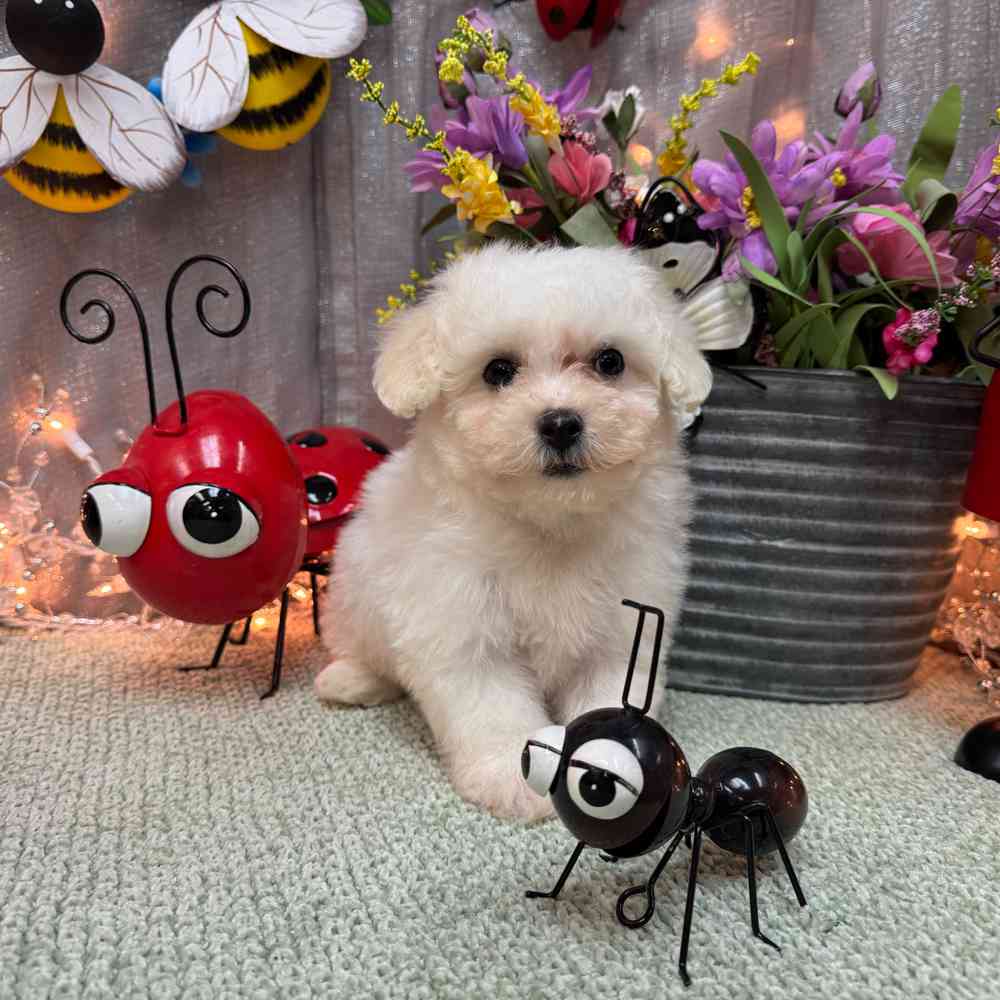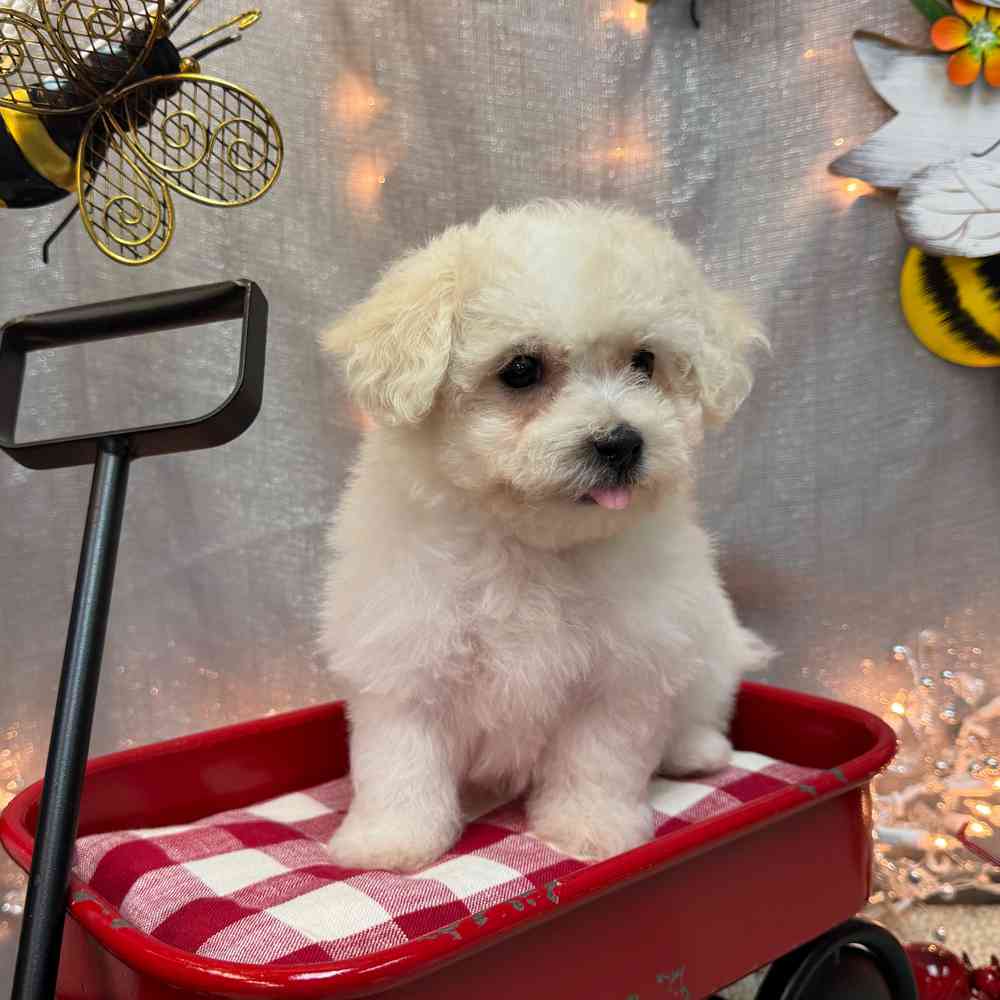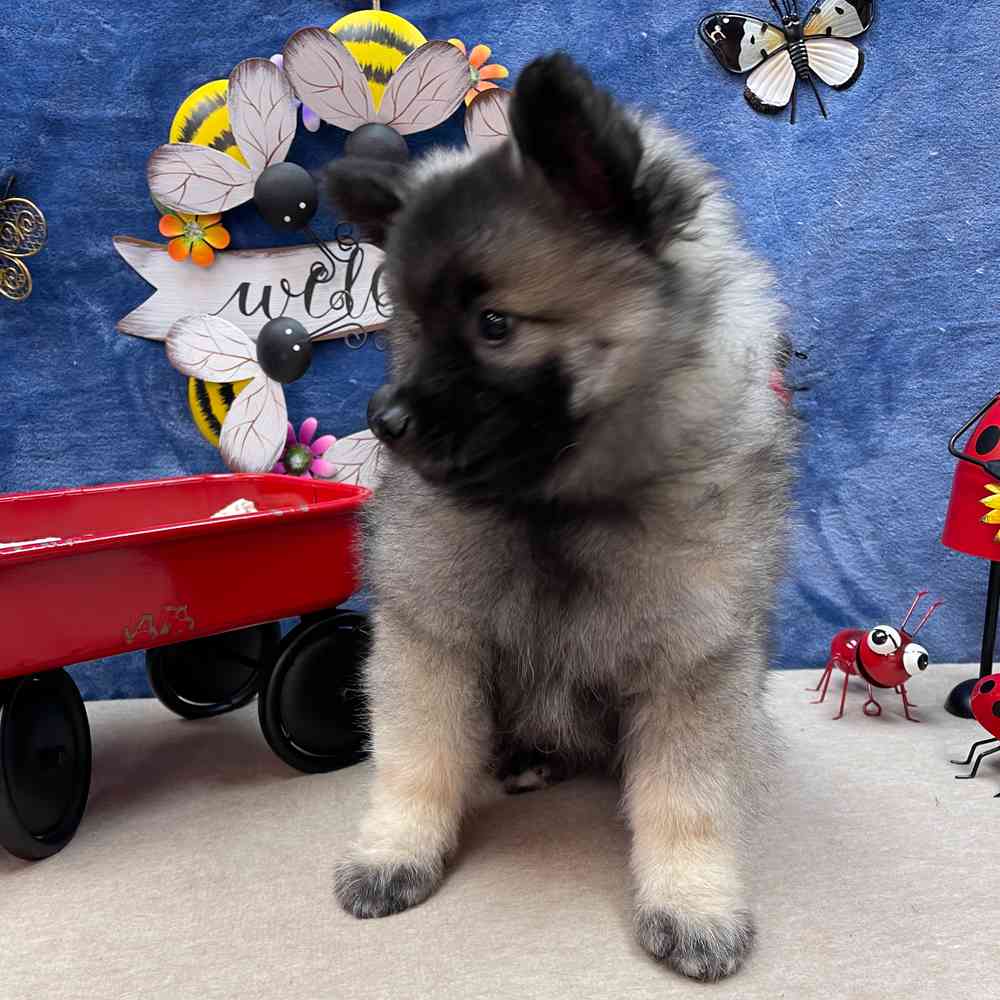
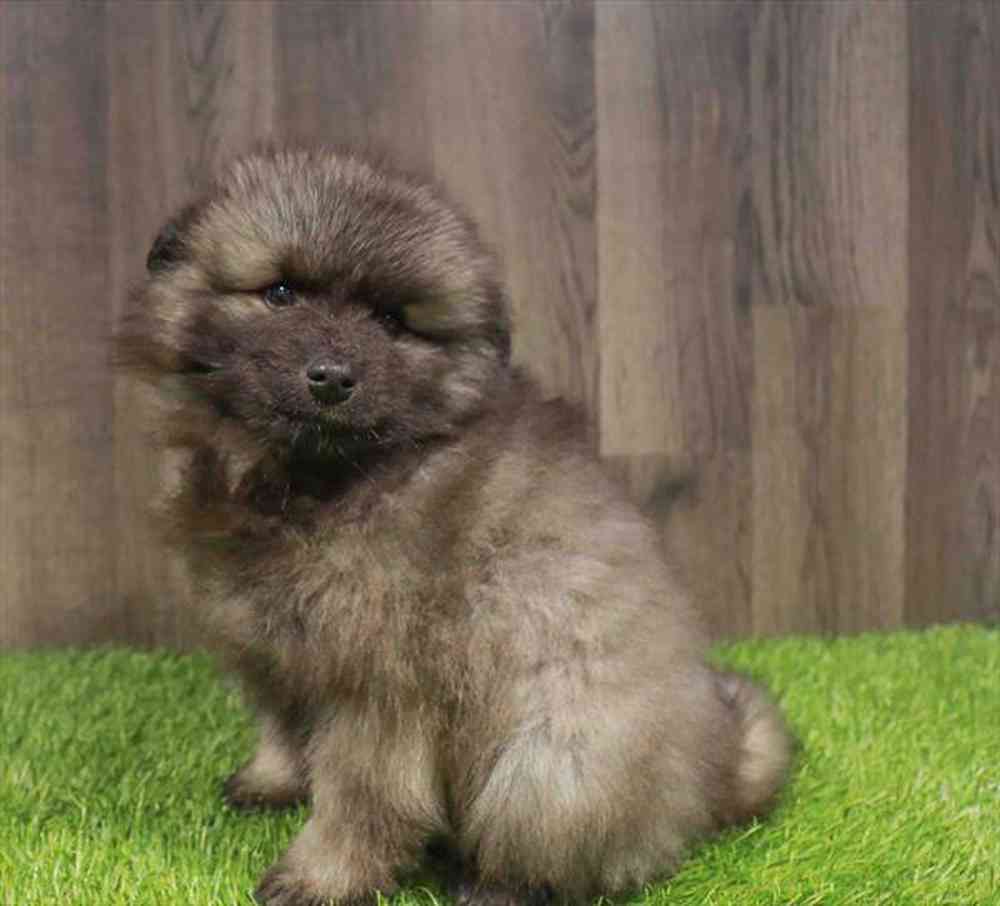
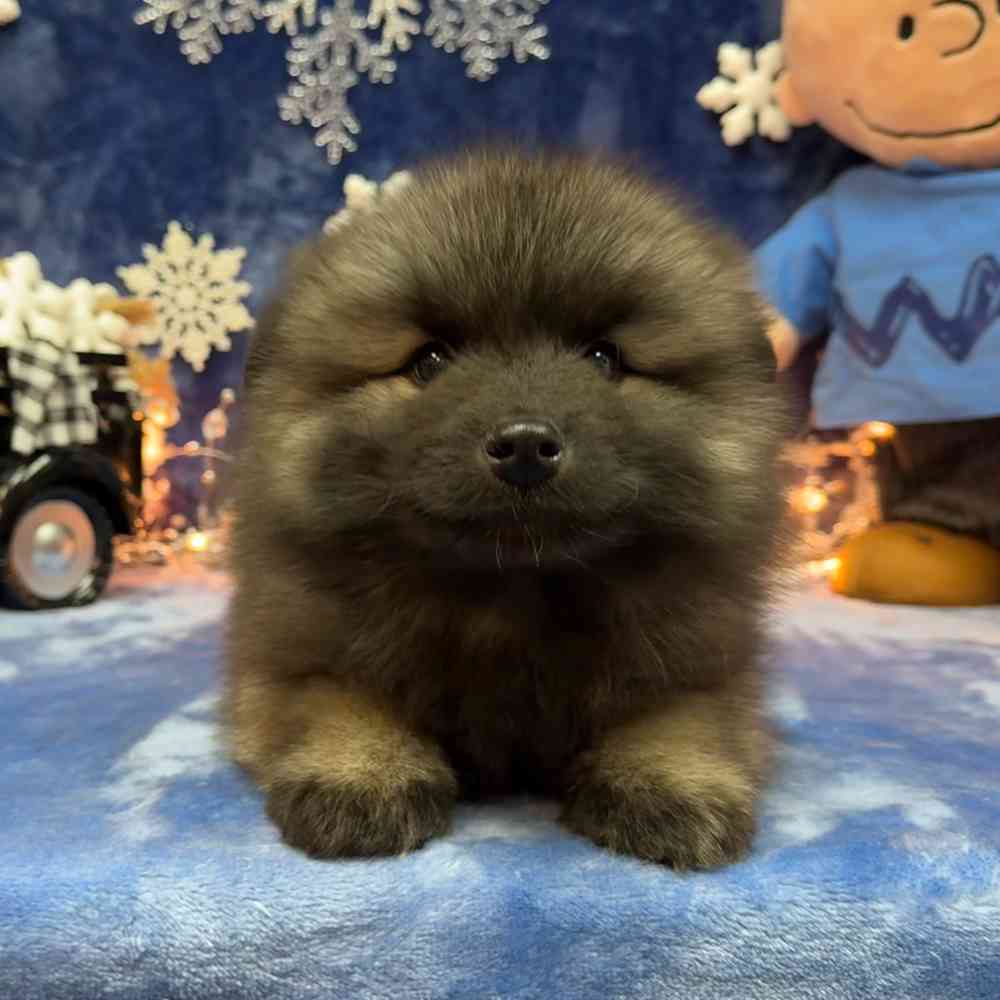
AKC Registrable
Keeshond
The amiable Keeshond is a medium-sized spitz dog of ample coat, famous for the distinctive “spectacles” on his foxy face. Once a fixture on the canal barges of his native Holland, the Kees was, and remains, a symbol of Dutch patriotism.
Available Pups
Puppy Knowledge
Breed Standard
General Appearance
The Keeshond (pronounced kayz-hawnd) is a natural, handsome dog of well-balanced, short-coupled body, attracting attention not only by his coloration, alert carriage, and intelligent expression, but also by his stand-off coat, his richly plumed tail well curled over his back, his foxlike expression, and his small pointed ears. His coat is very thick around the neck, fore part of the shoulders and chest, forming a lion-like ruff-more profuse in the male. His rump and hind legs, down to the hocks, are also thickly coated, forming the characteristic "trousers." His head, ears, and lower legs are covered with thick, short hair.
Size, Proportion, Substance
The Keeshond is a medium-sized, square-appearing, sturdy dog, neither coarse nor lightly made. The ideal height of fully matured dogs when measured from top of withers to the ground is 18 inches for males and 17 inches for bitches - a 1 inch variance either way is acceptable. While correct size is very important, it should not outweigh that of type.
Head
Expression - Expression is largely dependent on the distinctive characteristic called "spectacles" - a combination of markings and shadings in the orbital area which must include a delicate, dark line slanting from the outer corner of each eye toward the lower corner of each ear coupled with expressive eyebrows. Markings (or shadings) on face and head must present a pleasing appearance, imparting to the dog an alert and intelligent expression. Very Serious Fault - Absence of dark lines which form the "spectacles." Eyes - Eyes should be dark brown in color, of medium size, almond shaped, set obliquely and neither too wide apart nor too close together. Eye rims are black. Faults - Round and/or protruding eyes or eyes light of color. Ears - Ears should be small, triangular in shape, mounted high on head and carried erect. Size should be proportionate to the head-length approximating the distance from the outer corner of the eye to the nearest edge of the ear. Fault - Ears not carried erect when at attention. Skull - The head should be well-proportioned to the body and wedge-shaped when viewed from above - not only the muzzle, but the whole head should give this impression when the ears are drawn back by covering the nape of the neck and the ears with one hand. Head in profile should exhibit a definite stop. Faults - Apple head or absence of stop. Muzzle - Of medium length, neither coarse nor snipey, and well-proportioned to the skull. Mouth - The mouth should be neither overshot nor undershot. Lips should be black and closely meeting-not thick, coarse or sagging, and with no wrinkle at the corner of the mouth. Faults - Overshot, undershot or wry mouth. Teeth - The teeth should be white, sound and strong meeting in a scissors bite. Fault - Misaligned teeth.
Neck, Topline, Body
The neck should be moderately long, well-shaped and well set on shoulders. The body should be compact with a short, straight back sloping slightly downward toward the hindquarters: well ribbed, barrel well rounded, short in loin, belly moderately tucked up, deep and strong of chest. Tail - The tail should be moderately long and well feathered, set on high and tightly curled over the back. It should lie flat and close to the body. The tail must form a part of the "silhouette" of the dog's body, rather than give the appearance of an appendage. Fault - Tail not lying close to the back.
Forequarters
Forelegs should be straight seen from any angle. Pasterns are strong with a slight slope. Legs must be of good bone in proportion to the overall dog. Shoulder to upper arm angulation is between slight to moderate.
Hindquarters
Angulation in rear should be between slight to moderate to complement the forequarters, creating balance and typical gait. Hindquarters are well muscled with hocks perpendicular to the ground.
Feet
The feet should be compact, well rounded, cat-like. Toes are nicely arched, with black nails.
Coat
The body should be abundantly covered with long, straight, harsh hair standing well out from a thick, downy undercoat. Head, including muzzle, skull and ears, should be covered with smooth, soft, short hair-velvety in texture on the ears. The neck is covered with a mane-more profuse in the male-sweeping from under the jaw and covering the whole of the front part of the shoulders and chest, as well as the top part of the shoulders. The hair on the legs should be smooth and short, except for feathering on the front legs and "trousers" on the hind legs. Hind legs should be profusely feathered down to the hocks-not below. The hair on the tail should form a rich plume. Coat must not part down the back. The Keeshond is to be shown in a natural state with trimming permissible only on feet, pasterns, hocks and - if desired - whiskers. Trimming other than as described to be severely penalized. Faults - Silky, wavy, or curly coats. Part in coat down the back.
Color and Markings
A dramatically marked dog, the Keeshond is a mixture of gray, black and cream. This coloration may vary from light to dark. The hair of the outer coat is black tipped, the length of the black tips producing the characteristic shading of color. Puppies are often less intensely marked. The undercoat is very pale gray or cream, never tawny. Head - The muzzle should be dark in color. "Spectacles" and shadings, as previously described, are characteristic of the breed and must be present to some degree. Ears should be very darkalmost black. Ruff, Shoulders and "Trousers" - The color of the ruff and "trousers" is lighter than that of the body. The shoulder line markings of light gray must be well defined. Tail - The plume of the tail is very light in color when curled on the back, and the tip of the tail should be black. Legs and Feet - Legs and feet are cream. Faults - Pronounced white markings. Black markings more than halfway down the foreleg, penciling excepted. White foot or feet. Very Serious Faults - Entirely black or white or any solid color; any pronounced deviation from the color as described.
Gait
The distinctive gait of the Keeshond is unique to the breed. Dogs should move boldly and keep tails curled over the back. They should move cleanly and briskly; the movement should be straight and sharp with reach and drive between slight to moderate.
Temperament
Friendly, Lively, Outgoing
Overview
Group
Non-Sporting
About
These square, sturdy companions descend from the same ancient stock as other spitz types, such as Pomeranians and Samoyeds. Typically “spitzy,” Keeshonden have a foxy face, pointed ears, an abundant coat, and a plumed tail carried high over the back. A unique breed characteristic—and one of the most charming hallmarks in all dogdom—is the “spectacles.” These shadings and markings around the eyes give the impression that a Kees is wearing designer eyewear. The specs draw attention to an alert, intelligent expression.
History
The Keeshond (“kayz-hawnd”; Keeshonden, plural) was a hardy, nimble-footed barge dog long kept as a guard and companion on Dutch vessels that sailed the manmade waterways of the Low Countries. An unpretentious “people’s dog,” the Keeshond was a symbol of the 18th-century Dutch Patriots Party in its long opposition to the royal House of Orange. There’s historical disagreement over why the breed is called Keeshond: The name might refer to a Patriot mascot dog called Kees, or to two different Patriot leaders nicknamed “Kees.”
Standard
The Keeshond (pronounced kayz-hawnd) is a natural, handsome dog of well-balanced, short-coupled body, attracting attention not only by his coloration, alert carriage, and intelligent expression, but also by his stand-off coat, his richly plumed tail well curled over his back, his foxlike expression, and his small pointed ears. His coat is very thick around the neck, fore part of the shoulders and chest, forming a lion-like ruff-more profuse in the male. His rump and hind legs, down to the hocks, are also thickly coated, forming the characteristic “trousers.” His head, ears, and lower legs are covered with thick, short hair.
Nutrition
Keeshonden should do well on a high-quality dog food, whether commercially manufactured or home-prepared with your veterinarian’s supervision and approval. Like most Northern breeds, they also do well on a fish-based diet that is low in carbs. Any diet should be appropriate to the dog’s age (puppy, adult, or senior). Some dogs are prone to getting overweight, so watch your dog’s calorie consumption and weight level. Treats can be an important aid in training, but giving too many can cause obesity. Learn about which human foods are safe for dogs, and which are not. Check with your vet if you have any concerns about your dog’s weight or diet. Clean, fresh water should be available at all times.
Grooming
Keeshonden do require regular grooming, but going through their coats once a week with a pin brush usually does the job. This will keep the undercoat brushed out, and keeps shedding to a minimum. The only trimming needed is tidying around the feet, pads, and hocks. Pet owners can brush weekly and take their dogs to the groomer for a bath and blow-dry every four to six weeks, or they do it themselves. Show dogs are bathed a few days before the show weekend.
Exercise
Keeshonden will adapt to many environments. Historically they have had homes ranging from farms with lots of space to run to barges having little room to move around. They do need regular exercise and like being with their families. A free run or a nice walk daily will benefit them physically and mentally, and then they will be glad to climb up on the sofa with you while you read or watch TV. An essential thing to know about Kees is that they are happy dogs and will smile every day if you just spend time with them.
Training
A well-kept secret is that Kees are very smart and highly trainable. They excel at obedience, where some of them are nationally ranked, as well as agility, where the first multiple MACH was a Keeshond named Molly. Many Kees have also distinguished themselves in therapy work. Kees learn things quickly and are motivated to please their trainers. However, the trainer has to keep up with them, as they can become bored. It is important to start with your Kees as a puppy between 10 and 14 weeks. They will learn fast and move to the next level. Early socialization and puppy training classes are recommended. Without training they will learn things, but not necessarily what you had in mind!
Health
Keeshonden in general are a healthy, active breed that can live a happy life from 12 to 15 years of age. The Keeshond Club of America recommends certain health tests for every Keeshond before it is bred to help breeders identify any health concerns. These tests include X-rays to screen for hip and elbow dysplasia, an exam for patellar luxation, a CERF eye exam, and genetic screening for primary hyperparathyroidism. Because the breed has been screened for these diseases by reputable breeders, the conditions have been reduced in the breed, and most Kees are free of them. When purchasing a puppy, it is the buyer’s responsibility to ask for the test results of the pup’s parents and discuss them with the breeder.


